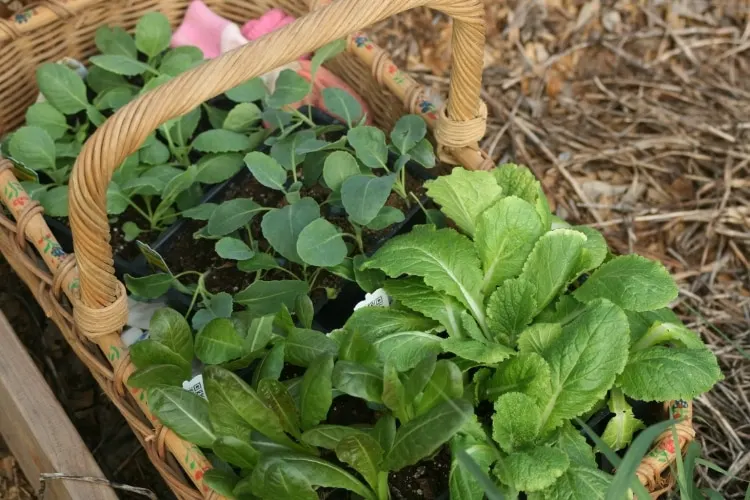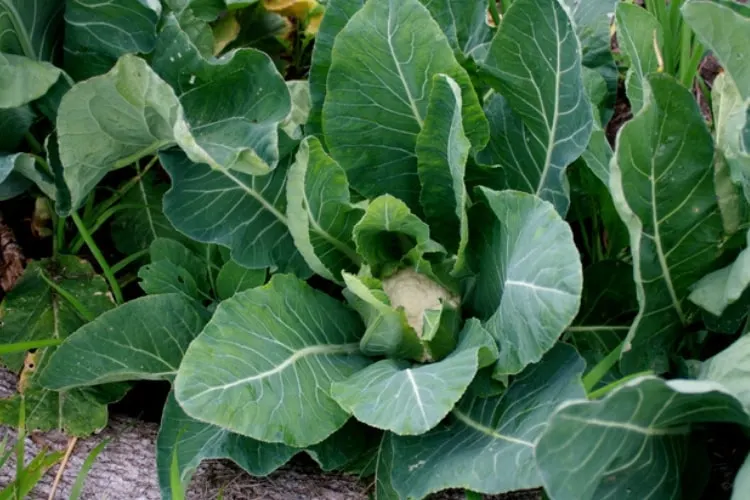
The time to start planning the fall garden is when it’s still summer. The time to plant your fall garden will depend on your climate. Some of us will start planting our fall garden in July and some of us won’t plant our fall garden until October. If you plan well and plant frost tolerant vegetables you’ll be able to extend your harvest well into the fall.
Many fall and winter vegetables produce just one harvest per plant, cabbage and cauliflower for instance, and others you can cut and harvest over and over. If you’re unsure how much of each plant to grow for your family you can use these printable sheets as a guide. You can get them emailed to you by filling out the form below.

Planning the Fall Garden
- Pull out your gardening notebook and look at the last few years’ layout. You want to make sure you’re rotating your crops and not planting the same thing in the same spot year after year. If the idea of keeping a gardening notebook is a bit overwhelming, you can get a printable gardening notebook that will give you a good foundation of what information to keep.
- Make a list of cool weather vegetables that your family likes to eat. I think this is the most important part of garden planning. Be honest about what your family will eat. Sure, it’s great to try some new things each year. Or some things that you don’t care for from the grocery store but you think you might like home grown (we are this way with sweet peas). But if you are just starting and you know your family will not eat cabbage, don’t plant 30 cabbage plants.
- Find your average frost date. You can plug your zip code into this calculator to find your average frost date. If you are in Canada, you can use this chart. Now, remember this is an average so you can get your first frost earlier or later than this date. This will tell you how many frost free days you have. So, if you are going to plant something that does not tolerate frost, you will need to cover it when it frosts, or risk loosing it. Now, count backwards from that date and that is how many frost free days you still have.
- Read the back of the seed packets. The back of seed packets has some great information and one of those nifty things is how many days to maturity. In case you don’t know, you start counting the days when you first see the true leaves on the seedlings (or when you plant the transplants). If you only have 60 days until your average first frost and you choose to plant something that has a days to maturity of 70 days and is not frost tolerant, you are risking it. Here’s how to read a seed packet.
- Pick varieties with fewer “days to harvest”. This is especially important if you have a short growing season. If you have a choice between a variety that takes 40 days to mature and one that takes 45 days to mature, pick the 40 days variety.
- Put the sow by date beside each of the vegetables on your list. To get the sow by date, take the number of days to harvest (from the back of the seed packet) and count backwards from your average first frost date. Now, this isn’t an exact math problem. If your average first frost is October 15th and you wan to plant 45 day cabbage, you’ll need to plant the cabbage seeds no later than September 1st. But will probably want to plant it earlier because it takes a week or so for the seed to germinate. Also, as the temperatures start cooling off, the plants won’t grow as fast as they do when the weather is warming up. But this little exercise will at least give you an idea of when you need to plant.

Planting the Fall Garden
- Talk to a gardener in your area who gardens in the fall. Planting a fall garden will be a little different depending on your climate so it’s a great to get some specific tips from someone in your area. Many people, even those who live in warm climates, think of gardening in the spring and summer and then take off during the fall and winter. You want to find someone who is trying to eek out every last bit of gardening they can and ask them to help you.
- Try succession planting. Most cool weather crops do not continue to produce all season long, they make one big thing and then they are pretty much done. Take cabbage for instance, you don’t want 20 large heads of cabbage all maturing at the same time (unless you’re going to freeze it). To keep that from happening, you can succession plant – which is just a fancy name for staggering your planting. One way to do this is to plant seeds for the same plants over period of several weeks. You could plant a a few broccoli seeds one week and then the next week plant a few more. That way you won’t have it all maturing at the same time. Another way to succession plant is to plant transplants (either ones you’ve started or ones you’ve purchased) and then plant seeds for the same plants at the same time. The plants you grow from seeds will mature a little later than than the transplants. Here’s more information on succession planting.
- Know what plants are frost tolerant. Some plants can not only tolerate frost but actually love it. Some of those plants are onions, cabbage, broccoli, cauliflower and parsley. If you live in a moderate climate, you won’t have to worry too much about even covering these plants in the winter. But if you live where it gets colder, you will. Here are 15 cold hardy plants for the fall vegetable garden.
- Use row covers or tunnels. I don’t use either of these but if I lived where it snowed I would. The idea is that you put cloth covers over your plants and then the snow insulates them. And it works. I’m super impressed with Mother of a Hubbard and all that she is able to grow using row covers.
- Grow some things indoors. If you have a little space near a window or even some grow lights you can easily grow sprout and microgreens indoors. If you live where it gets really cold, you might consider having a greenhouse like Anna from Northern Homestead does.

If you live in a warm winter climate, be sure to check out our gardening through the year post for month by month inspiration.
Do you plant a fall garden? Be sure to share your tips in the comments.


Eden
Wednesday 11th of August 2021
I am trying to make my own garden, this article is very helpful!
Angi Schneider
Saturday 21st of August 2021
I'm so glad!
Sugarpawz
Sunday 17th of February 2019
Really helpful post! Thank you for sharing! Me and my husband are gardeners for first year and we had a great year
Angi Schneider
Thursday 21st of February 2019
That's so awesome! I'm glad the post helped you and here's to another great gardening year.
Cristina
Monday 7th of August 2017
My annual fall garden is by far far the easiest of the year. Mother Nature waters it for me and most pests are dormant so it pretty much handles itself
Angi Schneider
Monday 7th of August 2017
Yes, I find that to be the case here too. It truly is a joy to have a fall garden.
tinisha brugnone
Monday 31st of August 2015
Very informative!
Ruth
Sunday 30th of August 2015
I never knew about counting from when the plant gets it's first try leaves, or starting a week earlier because of slower germination. Very helpful info, thank you.
Angi Schneider
Sunday 30th of August 2015
You're welcome, glad it helped! Happy Gardening!